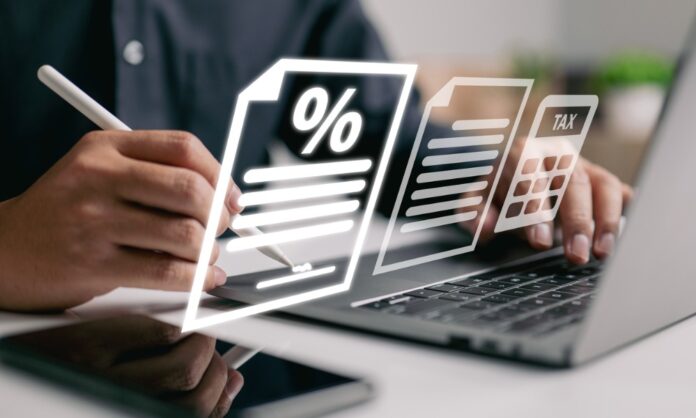E-invoicing has been a hot topic in Malaysia lately — and for good reason. With the Inland Revenue Board of Malaysia (IRBM) rolling out its e-Invoice implementation plan, businesses of all sizes are being encouraged (and soon, required) to adopt systems that support real-time, digital invoicing.
If you’re running a retail shop, café, or restaurant, your point-of-sale (POS) system isn’t just for processing payments anymore. It’s about to play a much bigger role.
So, the big question is: Is your POS system ready for e-invoicing?
Let’s break down what e-invoicing means, why it matters, and what businesses like yours should look for in a modern POS setup in Malaysia.
What Is E-Invoicing (And Why Is It a Big Deal)?
E-invoicing, short for electronic invoicing, involves creating, sending, receiving, and storing invoices in a structured digital format, not just emailing a PDF. It’s a major part of Malaysia’s digitalisation roadmap and is being led by the IRBM as part of tax reform efforts.
The main goals?
- To reduce errors caused by manual processes
- To curb tax evasion and improve transparency
- And to streamline audits and reporting
Eventually, most businesses in Malaysia will be required to submit their invoices digitally, in real-time, through a central platform regulated by IRBM.
This is where a POS system like Million comes in.
How Your POS System Ties into E-Invoicing
Let’s say you’re running a small café in Kuala Lumpur. A customer walks in, orders a latte and a sandwich, and pays using a QR code. You issue a receipt — job done, right?
Not quite. Under the new framework, this transaction will need to be automatically recorded and submitted as an e-Invoice — ideally straight from your POS system to IRBM’s platform. That means your POS needs to do more than just track inventory and print receipts; it has to:
- Capture and structure transaction data
- Integrate with the IRBM e-Invoice platform (via API or Peppol network)
- Generate IRBM-compliant invoices
- Store records for audits or future reporting
So, if your current POS system can’t do this yet, it may be time to upgrade.
Key Features to Look for in an E-Invoice-Ready POS System
If you’re shopping around for a new POS or considering upgrading your current one, here are the must-have features:
1. Built-In E-Invoice Module Aligned with LHDN Requirements
Instead of relying on third-party tools, choose a POS system with a built-in e-invoicing module that follows Lembaga Hasil Dalam Negeri (LHDN)‘s latest technical guidelines. This ensures smoother compliance, fewer integration issues, and faster invoice validation, especially once mandatory e-invoicing kicks in for businesses.
2. Real-Time Data Syncing
An e-invoice must be generated and sent the moment the sale happens. This means your POS must sync instantly with the backend, ensuring there are no delays in reporting.
3. Tax Configuration Tools
Your POS system should help you:
- Apply the correct Sales and Service Tax (SST)
- Calculate discounts, service charges, or rounding
- Apply tax codes to different items or services
4. Digital Receipt & Invoice Options
Your POS should allow digital invoicing via email or QR code. While printed receipts are still common, more customers (and regulators) are going digital.
5. Secure Data Storage
The system should back up all transactions safely, either on the cloud or in a secure local server. This helps with compliance, audits, and peace of mind.
Not everyone’s tech-savvy. A good POS should offer a clean, easy-to-use interface with custom reports, invoice status tracking, and export options.
Common POS Systems That Are E-Invoice-Ready in Malaysia
Several POS providers have started rolling out updates or features that support e-invoicing:
- Million POS – Works well with its accounting modules and offers strong local support for SMEs.
- AutoCount POS – Offers integration with its accounting system and is preparing for IRBM e-Invoice support.
- StoreHub – Known for ease of use, StoreHub is also moving toward compliance-ready updates.
- Qashier POS – Popular among F&B businesses, with growing features related to tax reporting and digital integration.
Before you upgrade, check with your provider if their software roadmap includes e-Invoice compatibility, or if you’ll need to explore other tools.
What If Your POS System Isn’t Ready?
If your current POS isn’t up to speed, here are your options:
- Update your software – Some providers may roll out updates that add e-invoice support.
- Use a middleware – These are tools that link your POS to the e-invoice platform without changing the POS entirely.
- Switch systems – If updates aren’t available or feasible, it may be time to change providers, especially if you’re applying for digitalisation grants.
Yes, You Might Be Eligible for Grants
Here’s some good news: If you’re planning to digitise your POS system to comply with the e-Invoice rollout, you might qualify for financial support.
The Geran Digital Penjaja Madani (GDPjM) helps small and medium businesses upgrade their systems, including POS tools.
Some key requirements:
- You must be a Malaysian-owned SME
- Operating for at least 6 months
- Have a business registration (SSM)
- Use pre-approved digital service providers (TSPs)
So, if upgrading your POS for e-Invoicing seems expensive, look into the grants available before making your decision.
Final Thoughts
E-invoicing is a real, practical shift in how Malaysian businesses are expected to operate. And while it may sound like a headache, the truth is it can simplify operations, reduce manual errors, and improve financial transparency.
If you’re in retail or F&B, your POS system is at the heart of this change. Making sure it’s e-Invoice-ready can help you stay ahead, remain compliant, and even tap into government incentives for digital upgrades.
So, take a closer look at your current system — and ask yourself: Are you ready for what’s coming in 2025 and beyond?




